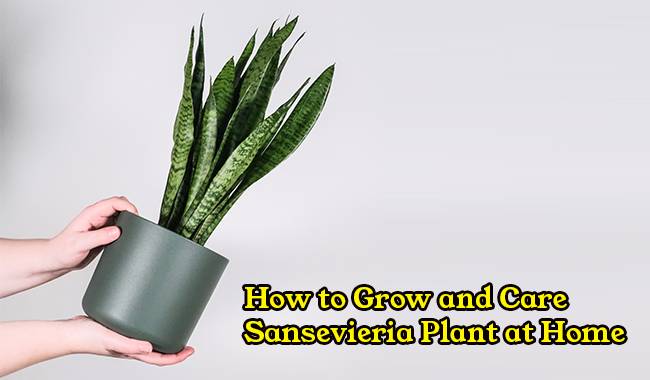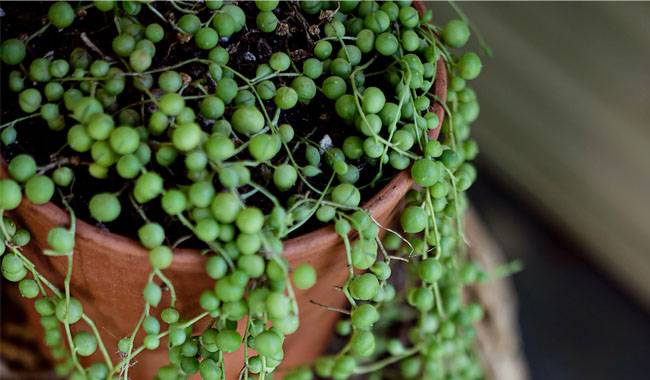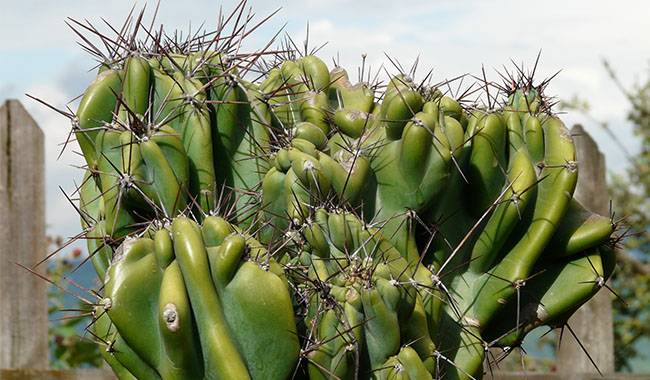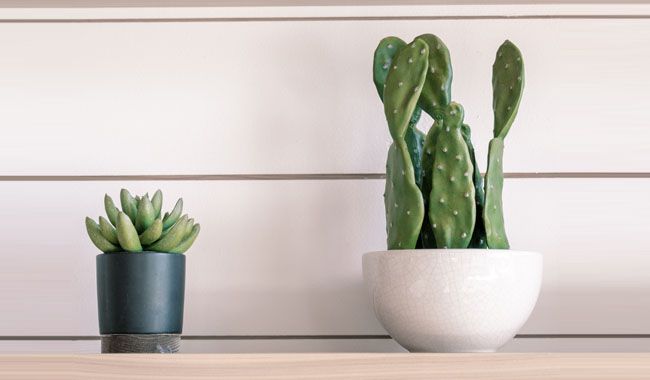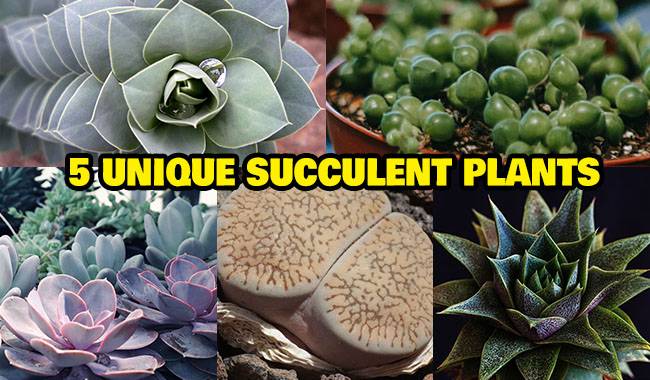
In beautiful pots or ornate vases, on walls, tables, and windowsills, succulents can survive for weeks without water. They do not change their character and do not accept conditions that are comfortable for most capricious houseplants. And their diversity allows everyone to find their favorites. Whether they look like rocks, whimsical flowers, extravagant branches, or lace, stylish succulents have long been more than just cacti and Succulents. You will learn 5 Unique Succulent Plants in the ThumbGarden article.
SUCCULENT – HARDY, COLORFUL AND VERSATILE
Succulent is often associated with deserts and semi-deserts, where only the most drought-resistant, water-storing plants can survive. But indoor succulents are much more diverse. They range from high-altitude plants accustomed to very cool temperatures and strong winds to subtropical plants and even tropical plants.
The most famous succulent plant – is the cactus. Their bulbous or columnar thick stems and vast defensive arsenal in the form of prickles and hairs make them hard to identify. But cacti deserve a closer look and special attention. Amber-like plants grow in more diverse forms. Their leaves and trunks sometimes take on the most bizarre shapes. In fact, the only “criterion” for succulents is fleshy tissue.
Ease of care is the main advantage and trump card of succulents. They are very hardy and long-lasting. Even inexperienced florists should not have any problems with fashionable succulents. If the plants are not going to bloom, they will be content with the same temperatures all year round. Simple cool overwintering will also allow you to enjoy beautiful, surprisingly colorful flowers.
Succulents are easily propagated by offspring and require only a small amount of watering and a few applications of fertilizer each year, making them truly versatile plants.
The best-known and most widespread representatives of indoor succulents were introduced so long ago that they have gone through a period of near oblivion. Even today, the names of the genera Euphorbia, Aloe, and Gynostemma do not always conjure up pleasant associations for many people. And it is completely futile. After all, these familiar and well-known plants can only be boring if you choose boring species. Dozens of species and hundreds of varieties make it possible for even a skeptic to find the stars of luxury.
But succulents aren’t the only plants.
Living stones lithops
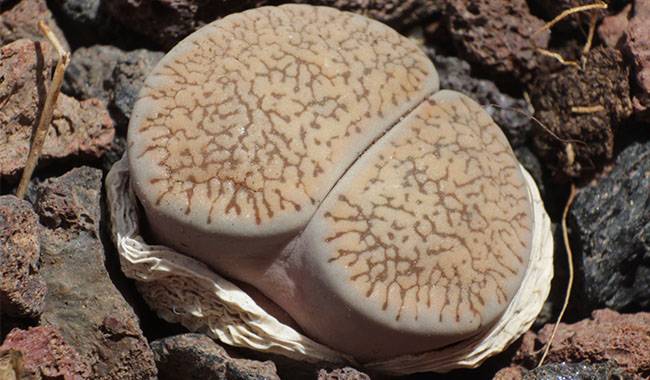
These amazing succulents look striking both when not in bloom and during bloom. living stone resembles lithops, lithops, and round lithops, offering a selection of the most exotic miniature forms, as if for indoor botanical gardens and succulent gardens. Their appearance matches quite well with their character.
A living stone is one of the most famous desert succulents. Their fancy stone-shaped “body” is formed by two thick, fused leaves with a shallow slit in the middle. Living stone looks especially attractive when it sprouts a pair of miniature new leaves and a short flowering stem topped with a swollen, tubular flower.
Lithops flowers bloom for only a few hours during the busiest part of the day, and it is a sight not to be missed. lithops can reach heights of up to 2 inches (5 cm) and can form entire colonies. And the stripes and spots on the surface only add to the exotic look of the Living stone. Replacing the old “stone” with a new pair of “lithops” each year does not spoil the decorative effect of the plant at all and allows the lithops to grow almost indefinitely in the same container.
Although there are more than 30 varieties, people still choose lithops according to their taste. they vary in color and textural effect, size, and “resemblance” to different types of stones, as well as the color of the inflorescence – now white, now bright yellow. But all the stone flowers resemble Living stone in the same way.
The most famous Lithops lesliei is so small that the dark “stone” is barely visible under the dazzling yellow flowers.
Lithops Plant (Pebble Plants): Planting, Care, and Common Problems
Conditions and care of indoor lithops
lithops like to be watered at the bottom and need a lot of water, with half of the substrate drying out in the middle. Their resting period should be cool and completely dry, but lithops can also be overwintered in normal room conditions with very little watering.
Otherwise, care is limited to removing old, dry leaves as they wilt and removing flower stems as the flowers wilt. Unlike many succulents, lithops are often infested with pests and, like all their competitors, they are afraid of moisture and decay.
Living stone conditions are easy to choose from. The sunniest part of the house, with frequent ventilation and moderate temperatures, without heat, are ideal conditions for lithops. They grow only in special succulent soil with drainage. Repot only when absolutely necessary.
Echeveria stone
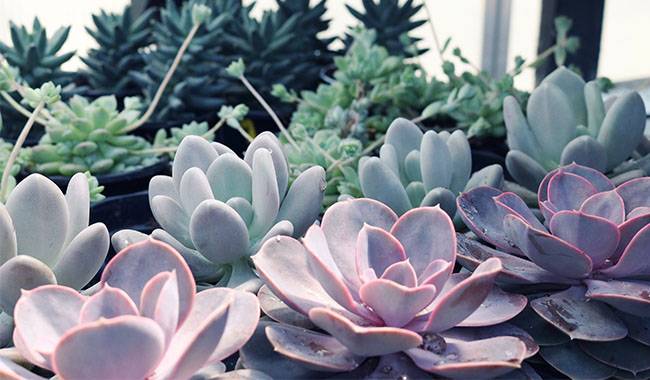
Somewhat reminiscent of plants in the garden, Echeveria contrasts between fragility and toughness. The succulents are very brittle, yet incredibly beautiful and unique, with miniature green flower-like rosettes that seem to be made to adorn indoor rock gardens, alpine botanical gardens, and rockery plant gardens.
Although these plants are rarely distinguished by species, Echeveria has a very large selection.
Echeverias, or Echeveria stone, are some of the most compact succulents. The rosettes range from 2-4 inches (5-10 cm) in height, and the flowering stems alone can grow to 10 inches (25 cm). The succulent leaves are spirally and tightly arranged, forming a flower-shaped rosette. Often, the leaves overlap slightly, forming a strict decoration.
The succulent plant’s, waxy-looking leaves most often appear silvery or sandy in color. Echeveria species that form true stems are rare in indoor forms. The rosettes gradually increase in diameter, but most are limited to a modest size of 1-4 inches (2.5-10 cm).
Wateriness does not prevent the leaves of Echeveria from remaining fairly stiff. They can be oval, diamond-shaped, ovate, almost lance-shaped, or rounded with a blunt tip. the flower stems of Echeveria are rather thick and crowned with lateral loose inflorescences of evocative yellow-orange flowers. The brightness of both flowers and leaves depends directly on the intensity of light.
The species of Echeveria are rarely chosen by name: all the plants resemble each other, but they do differ in the shape of the leaves and the effect they produce. In some proverbs, the rosettes look like roses, in others like large red flowers, in others like Korean Spurges, and in still others the leaves look fleshy and very thick. You should choose exactly the right rosette for your taste, depending on the shade of the bluish or dark color and your overall impression.
Echeveria Plants: Tips for Growing and Caring
Conditions and care of Echeveria indoors
Caring for Echeveria is very simple. Infrequent watering when the soil is dry, dry overwintering while remaining cold and dormant, and light monthly feeding – that’s all the plant needs. Echeveria are not only afraid of overwatering, but also of getting wet: water gently and avoid getting on the rosette. The only pests they suffer from are aphids.
In the company of stones and rocks, Echeveria show their beauty to the full, so they are often used in decorative compositions in flower and succulent gardens.
They require more than moderate conditions. Overwintering in cool conditions of 41-50 °F (5-10°C) is only necessary if you want to enjoy the flowers, if not cold. Otherwise, Echeveria grows well at all room temperatures and only needs good light.
In full sun, they look even more gorgeous and colorful. They are content with typical cactus and succulent substrates, can grow for a long time without replanting, and can be propagated not only by cotyledons but even by leaves.
Senecio rowleyanus in the room
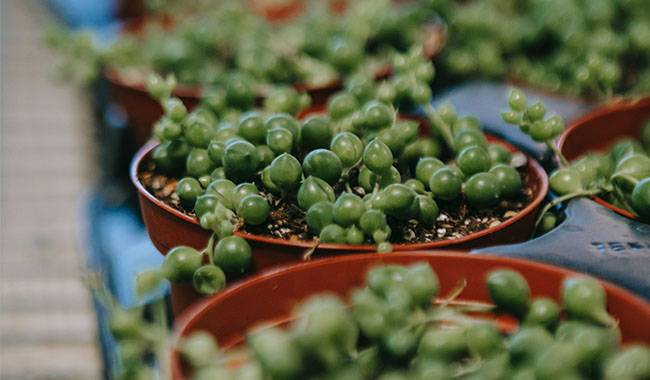
This plant resembles round peas strung on a green thread, forming striking waterfalls that are hard to confuse with other succulents. Senecio Rowley is one of the most original and gorgeous species that has become fashionable, above all among fans of ampelopsis crops.
Radiant and seemingly almost artificial, this stunning look and its pea bunches are a miniature marvel that brings a feminine and elegant feel to any interior.
Senecio rowleyanus, also known locally as Rowley’s cross, Emerald Pearl, is a gorgeous succulent plant with very thin, almost thread-like, but rather stiff shoots that hang down 20 inches (50 cm) long.
The thickened, rounded leaves do look like bright green peas, attached to the shoots by thin, short, and easily broken petioles. The shoots are capable of rooting in the soil and the leaves grow to 6 mm in diameter.
Senecio Rowley is well suited to the role of benzoin. Its long, hanging shoots cannot fit into any ordinary container and must dangle freely from the edge of a pot or hanging basket.
The single flowers of Senecio rowleyanus appear eccentric and fluffy and do not resemble daisies like other hybrids. But the winter flowers, which can last from November to July, can brighten up the colder months.
Senecio Rowley is so beautiful in its own right that varieties of the plant have not been bred. The rich emerald color of this Ampelopsis succulent plant looks very striking. Enthusiasts interested in this plant may enjoy the rooted hybrids (Senecio radicans), which have elongated, ovate leaves that are lighter in color and olive-blue.
How to Grow and Care Senecio Wooly
Conditions and care of Senecio rowleyanus potted plants
The cross of Senecio rowleyanus is easy to care for. The plant does not like excessive watering, but is slightly less tolerant of prolonged drought. The soil should dry out between waterings and the humidity should be kept to a minimum in winter. Fertilization should be done once a month from March to September. If needed, cut off any bare parts of the shoots or strands that have become too long.
Senecio rowleyanus needs a semi-shade, bright or sunny location. They grow well outdoors in summer, but can also be grown as purely indoor plants.
Cool cultivation around 50 °F (10°C) will promote flowering, but even without this, Senecio rowleyanus will maintain its high decorative qualities. Only when the substrate is full of roots can this plant be transplanted into special cactus potting soil mixtures.
Unfortunately, Senecio rowleyanus is not susceptible to pests, but it is easily propagated by cuttings or by dividing large bushes.
Exotic relatives of Spurges shine
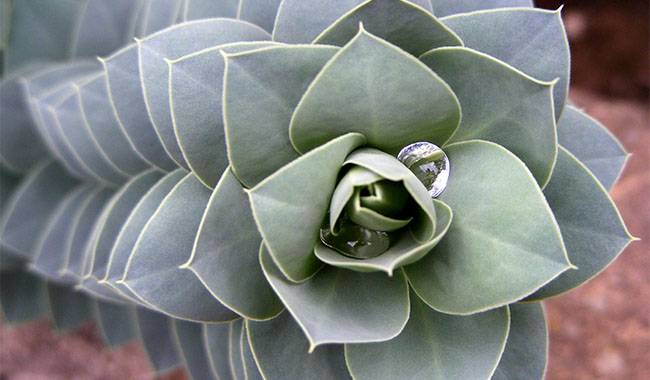
If the beautiful and brightly colored Spurges with oval leaves and unusual shoots are as familiar as the large cactus-like Spurges, a closer look at a large number of members of the genus Euphorbia introduced into potted cultivation reveals even more exotic stars.
Stick-like plants and thickened, stone-like leafless specimens are waiting to be noticed for their stylish extravagance.
Euphorbia needs to be handled with care because of its toxic, milky sap, and the plants should only be handled in a way that protects the skin. But this is almost the only feature common to all kinds of Euphorbia.
To a greater or lesser extent, all Spurges are similar to cacti. The whimsical trunk shape and primitive leaf pattern, as well as the presence of spines in most species, are easily recognizable members of the genus Euphorbia but are not essential in half of the species.
These include species without spines, plants with ribbed or cactus-like shoots, and leafless species. The height depends on the species. Some Spurges are small, others are huge and can grow to 6.5-10 foot (2-3 m) tall.
When choosing the species of Spurges, it is worth avoiding the boring classic varieties of the past. After all, there are some truly exotic specimens among the species of this plant. The incomparable Euphorbia tirucalli is today’s most stylish and popular Spurges. the rounded, slender, pencil-like, stick-like shoots of these Spurges form a whimsical green lace that will blend into any interior as an original accent.
The irresistible Molochium obesa seems at first glance more like a relative of lithops or cactus than Spurges. like the melon-shaped Euphorbia meloformis, it has an angular, thickened trunk with interesting facets that seem to be studded with tiny beads. The slender shoots that grow from the top only accentuate the beauty of the rounded trunk.
Euphorbia mammillaris forms a unique bush of very spiny, snake-like, branched faceted shoots with rich emerald tones at the top. And the intimidating Euphorbia horrida, with its thick ribbed cactus-like trunk, fascinates with its bright red, giant pickles.
Conditions and care of indoor Spurges
The unpretentiousness of Spurges is also well reflected in the exotic species. They require gentle watering in summer after the substrate has partially dried out, and only a little watering in winter. Excessive fertilizer can negatively affect the size of the plant and therefore needs to be applied very carefully. spurges usually do not require pruning or other care.
Finding the right conditions for Spurges and their relatives is very easy. They are very light-loving and will only develop properly in a sunny location. Normal room temperatures will suit them well, and although the bright flowers of this species complement the original trunk, they need cool overwintering conditions to bloom.
Any permeable substrate is suitable for growing Spurges. repot as soon as the roots fill the container. These succulents can be propagated not only by cuttings or scions but also by seeds, which germinate amazingly quickly.
The all-powerful Gasteria
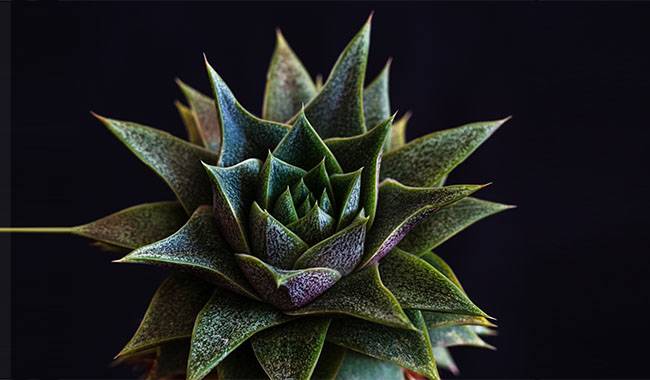
Unlike most indoor succulents, it is its reputation that has made Gasteria fashionable. Once considered so rare that it was hunted, Gasteria didn’t appear on the counters of floral centers or show off indoors, remaining a plant that claimed to be the pride of the collection. Fortunately, things have changed dramatically.
Gasteria is an eccentric succulent with an affinity for aloes but without any of their drawbacks. The leafy succulent has ligulate leaves with elongated tips, strikingly fleshy, articulated, as if rough, and a shapeless, thick surface.
Gasteria into whimsical patterns, which are characteristic of Gasteria and serve as the basis for species identification. The leaves are arranged in rather dense rosettes, but the size of the leaves still makes the silhouette appear very elegant.
Gradually, Gasteria becomes more massive and the leaves begin to grow in spirals. gasteria is very tactile – the leaves have smooth edges and no prickles. the flowering stems of Gasteria are usually short and bear tubular, swollen orange-yellow-red flowers that are borne in a single lateral cluster at the base.
The average height of all Gasteria is about 6-8 inches (15-20 cm). They are lovely in single primitive pots and are suitable as large accents in the succulent garden.
Although there are two dozen species, only hybrids can be found in indoor cultivation. Selection should not be based on the name, but rather on the pattern, shade of color, and shape of the rosette. Smooth green-leaved rosettes are only slightly more modest than extravagant, uneven, marbled, bluish, speckled, spotted, or watercolored rosettes.
What Is Gasteria Plant? How to Grow And Care For It
Conditions and care of indoor Gasteria
Gasteria flowers require a moderate amount of care. It is a first candidate for very busy homeowners or those who are away a lot and not at home. Ideally, water when the top of the soil has dried out. But Gasterias can even survive for weeks without water. They should not allow themselves to be over-watered. In spring and summer, fertilize only once a month.
As with fertilizers, the substrate for Gasteria should be a special substrate in a combination of cacti and succulents. However, the substrate and container should only be changed after the plant has completely absorbed the previous pot. Gasteria prefers diffuse but bright light, room temperature, and a cool overwintering period (but this is not necessary). In summer, plants can be brought into the fresh air without any worries.




